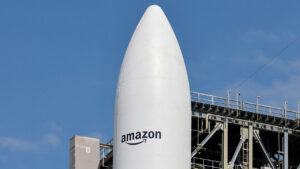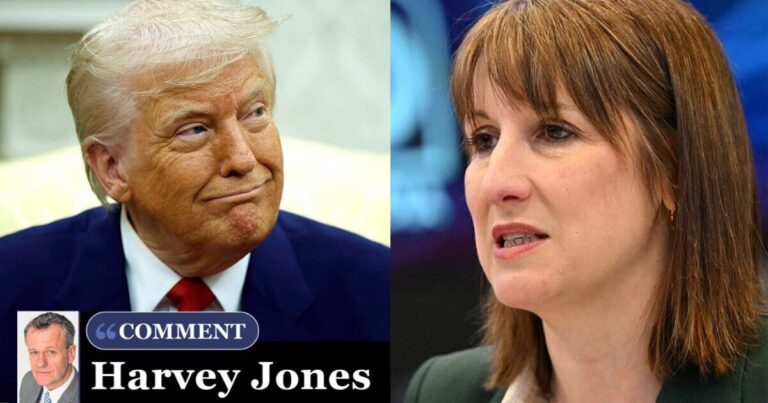Your browser does not support the <audio> element.
ARMSMAKING IS NOT like other businesses. It is impervious to macroeconomics and sheltered from fickle consumer tastes. Its prospects are determined by one factor—how militarily threatened its government customers are feeling. With wars blazing in Ukraine and Gaza, another on the brink between Israel and Lebanon, and more conflict looming as China eyes Taiwan, the perceived threat level as leaders of NATO countries gathered for a summit in Washington from July 9th to 11th was through the roof.

Last year NATO’s 32 members spent $1.3trn on defence, a record high after adjusting for inflation at least since the fall of the Soviet Union. America, by far the biggest spender, is budgeting $842bn this year. Historically more peacenik Europeans, spooked by Russian tanks on their doorstep, are undoing decades of stinginess that has resulted in accumulated underinvestment in equipment of about $600bn. This year NATO expects 18 members to meet the target of dedicating 2% of GDP to defence, up from three in 2014.
Not all of this money is going on kit—soldiers must be paid, bases operated and gear maintained. But last year 28% of NATO’s collective defence budget, or around $360bn, was spent on weapons systems, vehicles and other major equipment. That was more than double the share ten years ago. And the sums will continue to grow. Charles Woodburn, the chief executive of BAE Systems, the British maker of the Typhoon fighter, among other things, foresees “a long runway of increased defence spending”.
This sounds like a bonanza in the making—especially for America’s “prime” contractors at the heart of the military-industrial complex. American giants such as Lockheed Martin, RTX and Northrop Grumman dwarf their European rivals in terms of sales (see chart 1). The lion’s share of the $315bn that the Pentagon plans to spend on procurement and research and development (R&D) this year will end up in their pockets. Lockheed alone raked in sales of $68bn last year.
Instead, American defence bosses appear subdued, and not just because no one likes war. Their firms’ market values have barely risen since Russia invaded Ukraine in February 2022. Lockheed, RTX and Northrop have all done worse than the S&P 500 index of big American firms, which they had outpaced for decades, even as European counterparts have gone ballistic. The share price of Thales of France is up by 82% in the period. BAE’s has doubled. That of Rheinmetall, a German firm, has more than quintupled. The age-old gap between the valuations of American and European armsmakers (measured as a ratio of market value plus net debt to gross operating profit) has narrowed, calculates George Zhao of Bernstein, a broker (see chart 2).

One explanation for the primes’ underperformance is that they are stretched. As Ron Epstein of Bank of America points out, there are “capacity constraints across the board”. After the cold war Western defence budgets dwindled, procurement decisions were put on hold and the industry scaled back production. Following the terrorist attacks of September 11th 2001, America’s priorities swung towards counterterrorism, leading to a slow decline in the manufacturing of hardware. China’s maritime sabre-rattling in the Pacific moved America’s strategic emphasis away from land systems such as armoured vehicles. No one thought to add capacity to supply a ground war in Europe.
Such capacity will take years to restore, and this will happen only if companies can be assured of continued demand. As Mr Woodburn of BAE explains, defence firms need a “reasonable business case to put the balance-sheet to work”. And that business case is, for now, clearer in Europe than in America. A year ago BAE struck a deal to replenish the British army’s stock of artillery shells. Last month Rheinmetall won a contract for munitions from the German government worth up to €8.5bn ($9.2bn).
Meanwhile, America’s already gargantuan military budget is barely growing. A fiscal-responsibility law enacted last year could freeze spending in real terms until 2033. Procurement and R&D are set to fall in real terms next year. In April the chief executive of Northrop Grumman, Kathy Warden, warned of “slower top-line growth” in American defence spending in the short term. Lockheed’s sales last year grew by a meagre 0.8% in nominal terms, compared with 2021—and fell by perhaps one-ninth after adjusting for inflation.
The primes’ problems also have to do with changes to how and what the Pentagon buys—and whom it buys from. The Department of Defence (DoD) has long talked about squeezing more value for money from its procurement. Now it is actually doing something about it. Fixed-price deals are replacing cost-plus ones, whereby the state would cap companies’ profits from production but underwrite their R&D costs.
The model, in which companies bid to develop a weapons system for a specified fee and bear the risk of cost overruns, has caused Northrop Grumman and Boeing, a planemaker with a large defence arm, to lose billions of dollars. The danger of over-optimistic bids prompted Jim Taiclet, boss of Lockheed Martin, to declare in January that his company, which used to make it a point of pride to bag certain contracts, no longer has “any must-win programmes”.
The DoD’s frugal new ways are combining with a fresh emphasis on nimbler smart systems rather than main battle tanks, nuclear submarines, stealth fighters and the like. This combination, in turn, is attracting competition in a market that the primes had previously more or less stitched up—one more reason for the old-school contractors’ relative retreat.
Palmer Luckey, founder of Anduril, a seven-year-old startup in Silicon Valley which makes autonomous drones and other software-driven systems, says that the Pentagon is at last embracing “non-traditional” defence firms. He contrasts his company, a “cost-efficient, fast-moving guy”, with “cost-irresponsible” primes, whose main skill seemed to be understanding the labyrinthine procurement process. Anduril can now compete for almost any defence contract by putting its own capital at risk, he says. And, he adds, it no longer employs more lobbyists than engineers as it did in the early days.
Startup-in-arms
Anduril’s most significant victory came in April when in concert with General Atomics, another newish armsmaker, it beat Boeing, Lockheed Martin and Northrop Grumman in a contest to develop the Collaborative Combat Aircraft, a self-flying aeroplane, for the US Air Force. Other newcomers are notching up wins, too. In March the US Army chose Palantir, a technology firm founded in Silicon Valley (and now based in Colorado), to develop TITAN, a lorry stuffed with software to process battlefield data. The following month Sierra Nevada, another startup, was chosen over Boeing for a $13bn contract to replace the E-4B “doomsday” aircraft, which can serve as an airborne command post for the president and senior officers in the event of a nuclear attack.
It would be foolish to count the primes out. Long-standing legacy programmes such as the Lockheed F-35 fighter jet have years to run. Even Mr Luckey concedes that cost-plus deals will endure for complex systems such as aircraft-carriers and submarines. The primes remain the masters of both the engineering and the paperwork involved in these. In April Lockheed won a $17bn contract to develop a system to shield America from ballistic missiles. They are also likely to benefit from ballooning defence budgets abroad. American firms’ sales to foreign governments rose by 16% in 2023, to a record $238bn.
Uncle Sam may yet loosen the purse strings, too. Already money is coming through “supplementals”—additions to annual appropriations requested by the president. In April Congress approved $95bn, mostly for Ukraine and Israel. Perhaps a quarter of that will go directly to the primes. Donald Trump, who in his first term presided over large increases in military spending, may do so again if he returns to the White House next year. Steve Grundman of the Atlantic Council, a think-tank in Washington, foresees real-terms increases in total military expenditure of around 4% annually in the coming years—no match for the soaring budgets of the cold war, but “reasonable”.
And though they may prefer multibillion-dollar platforms with 30-year lifespans, the primes are also perfectly capable of developing smaller smart systems, notes Mr Grundman. If armed forces’ appetite for such kit keeps growing, the primes will not sit idly by. But they are no longer the only big guns in town. ■
To stay on top of the biggest stories in business and technology, sign up to the Bottom Line, our weekly subscriber-only newsletter.



















